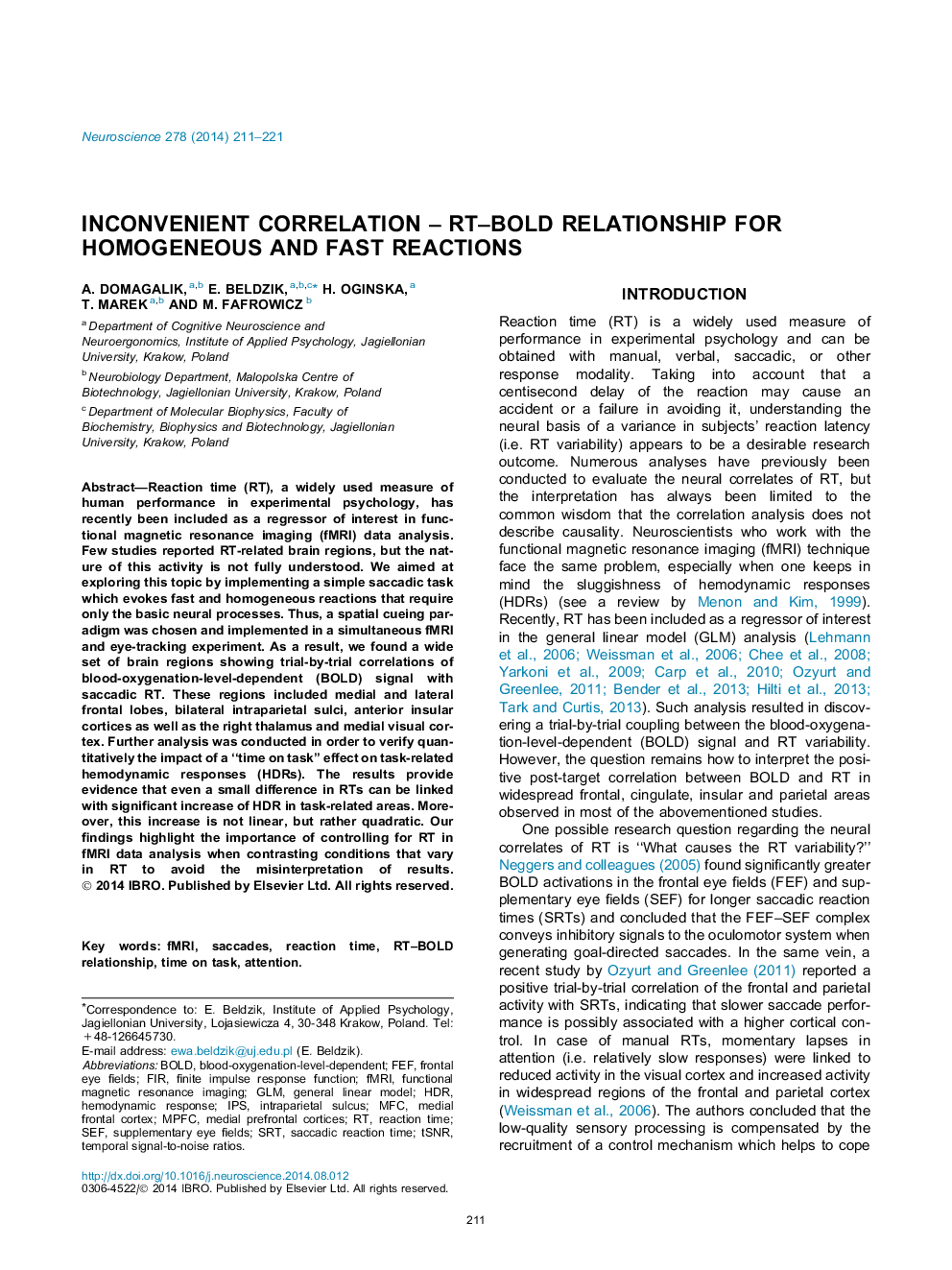| Article ID | Journal | Published Year | Pages | File Type |
|---|---|---|---|---|
| 6273756 | Neuroscience | 2014 | 11 Pages |
Abstract
Reaction time (RT), a widely used measure of human performance in experimental psychology, has recently been included as a regressor of interest in functional magnetic resonance imaging (fMRI) data analysis. Few studies reported RT-related brain regions, but the nature of this activity is not fully understood. We aimed at exploring this topic by implementing a simple saccadic task which evokes fast and homogeneous reactions that require only the basic neural processes. Thus, a spatial cueing paradigm was chosen and implemented in a simultaneous fMRI and eye-tracking experiment. As a result, we found a wide set of brain regions showing trial-by-trial correlations of blood-oxygenation-level-dependent (BOLD) signal with saccadic RT. These regions included medial and lateral frontal lobes, bilateral intraparietal sulci, anterior insular cortices as well as the right thalamus and medial visual cortex. Further analysis was conducted in order to verify quantitatively the impact of a “time on task” effect on task-related hemodynamic responses (HDRs). The results provide evidence that even a small difference in RTs can be linked with significant increase of HDR in task-related areas. Moreover, this increase is not linear, but rather quadratic. Our findings highlight the importance of controlling for RT in fMRI data analysis when contrasting conditions that vary in RT to avoid the misinterpretation of results.
Keywords
Related Topics
Life Sciences
Neuroscience
Neuroscience (General)
Authors
A. Domagalik, E. Beldzik, H. Oginska, T. Marek, M. Fafrowicz,
